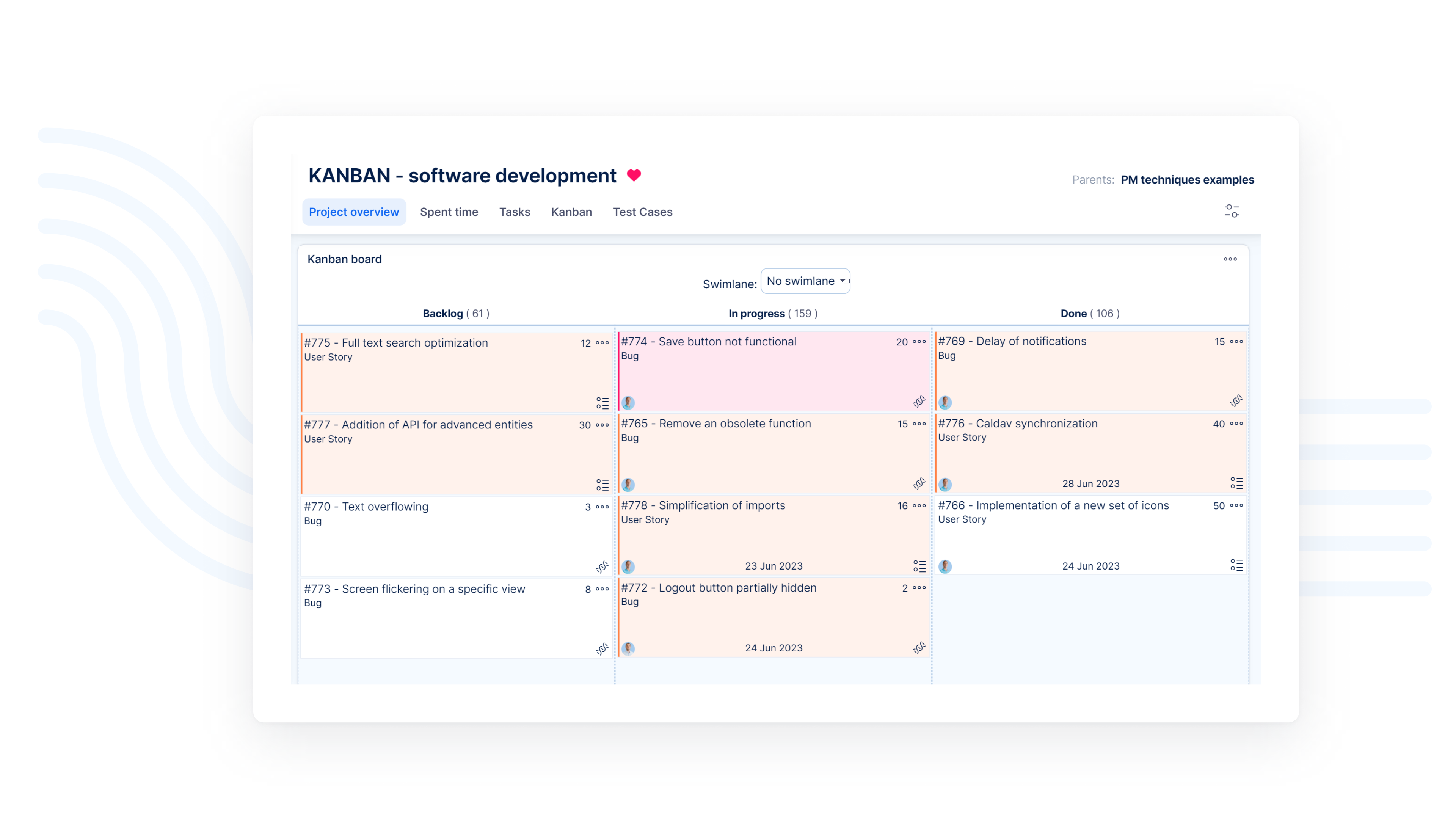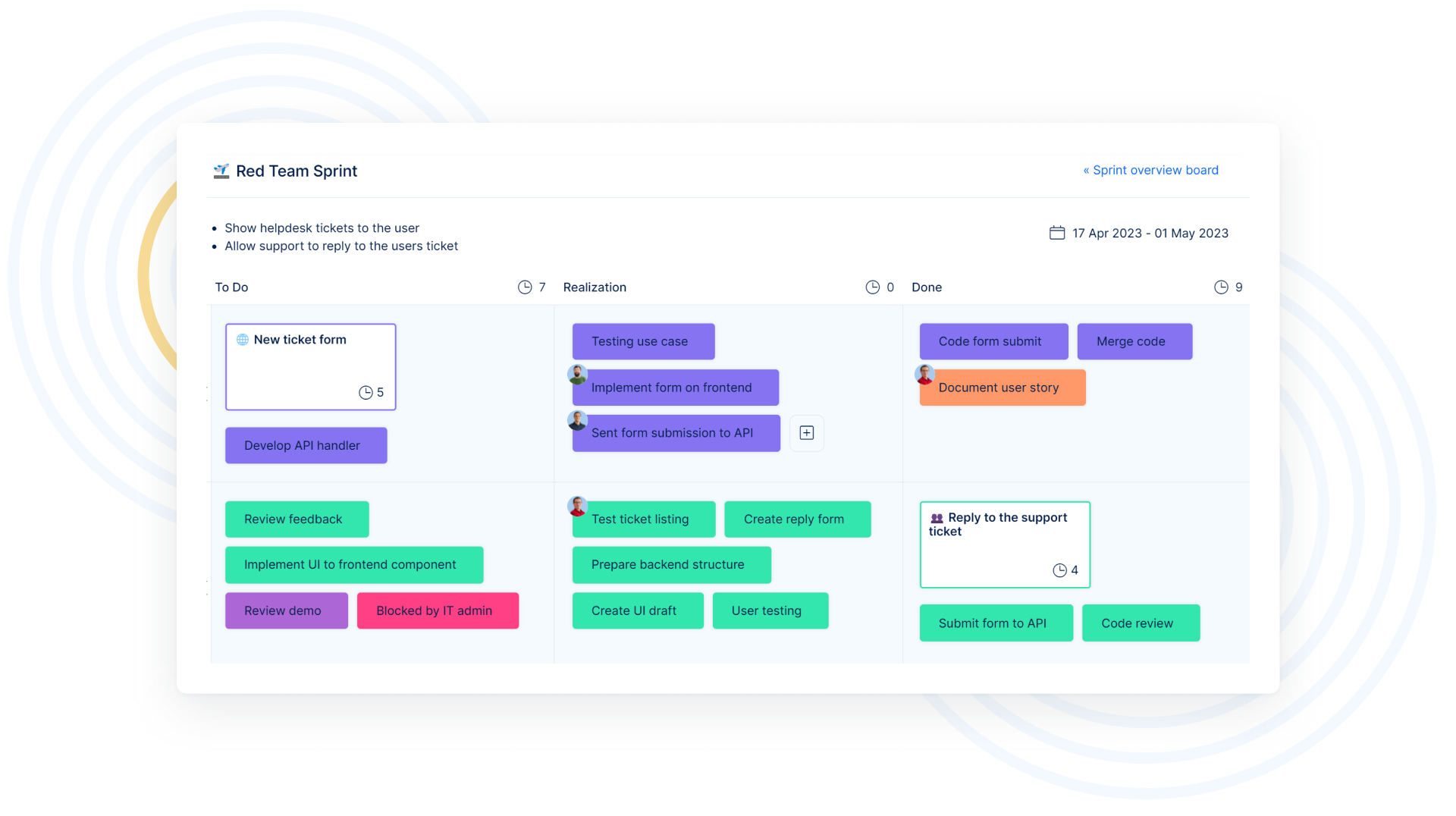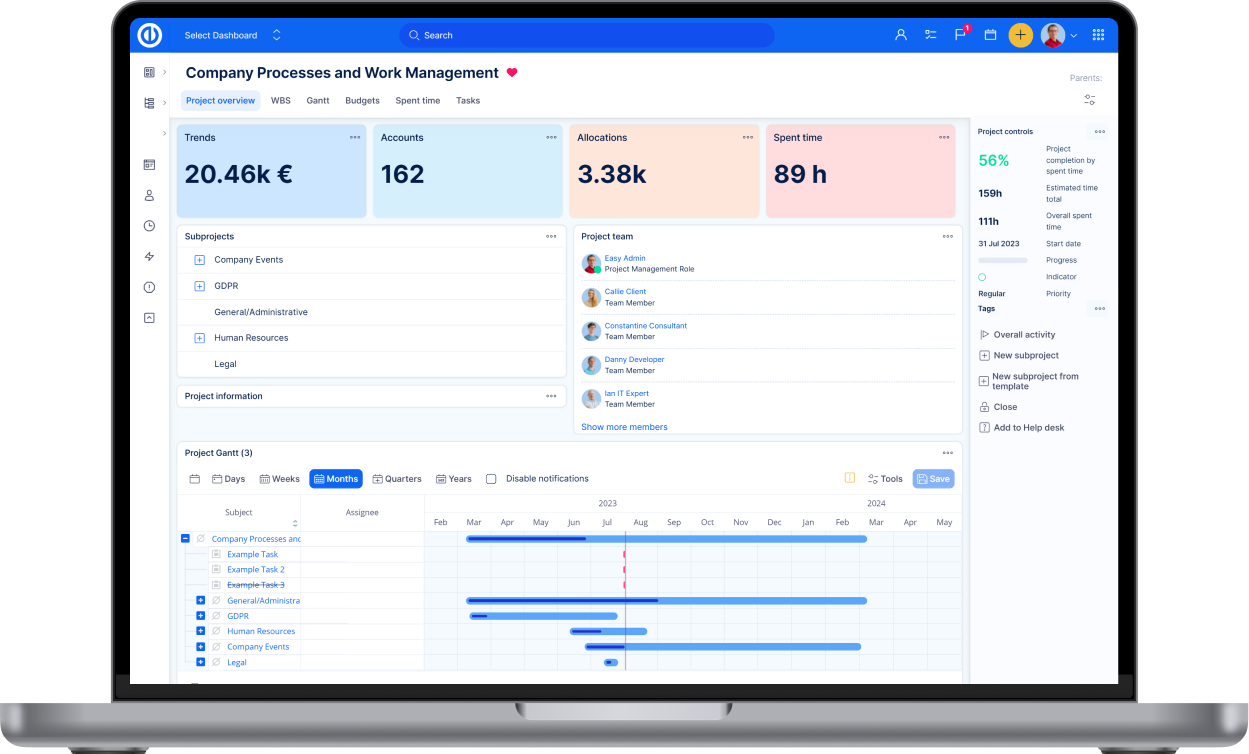
Case study: Enhancing Easy Software's Delivery Phase with Scrum
IT & Software
September 2023
Prague, Czech Republic
Product Development
Discover how Easy Software revolutionized its software product development during the Delivery Phase by implementing Scrum Boards. This case study explores the transformational changes from enhancing team collaboration and task management to improve client interactions and overall project efficiency.
Challenge
Prior to the adoption of Scrum Boards, Easy Software faced multiple challenges that hindered efficient software development. This section details the significant issues encountered during the Delivery Phase, which impacted both team productivity and project outcomes.
Before adopting Scrum Boards, our process faced several challenges:
- Issue tracking with Kanban visualization: The existing system made it difficult to track issues effectively, leading to inefficiencies.
- Complex task creation: The requirement to fill in numerous fields when creating tasks was time-consuming and often led to a loss of focus.
- Backlog management: Our backlog was disorganized and scattered across various platforms, making it hard to prioritize future work.
- Client feedback process: Gathering and digitizing feedback from clients was tedious and involved manual transcriptions from paper notes.
- Subtask management: Breaking down large tasks into subtasks required opening multiple browser windows, complicating the process.

Kanban board
Solution
Adopting Scrum Boards, which are designed to address common Scrum anti-patterns, has significantly improved our software development process. The boards are easy to set up.
Key improvements include:
- Smooth backlog management: Our backlog is now more manageable, ensuring that priorities are clear to the entire team.
- The clarity is ensured thanks to the basic funnel which includes phases – Inbox, To refine, and Refined.
- The PBI (Product Backlog Item) entities are easy to create or delete them. For better visual explicitness, one can use color or emoji coding.
- Focused sprint goals: The visibility of sprint goals at all times ensures that the team is aligned and working towards the same objectives.
- Engaging refinement sessions: The ability to seamlessly break down big ideas into smaller, actionable PBIs (Product Backlog Items) has made refinements far from boring. We can now use various measures for the size of PBIs, making the process more flexible.
- Enhanced client interaction: Reviews with clients are more engaging, with the ability to collect feedback immediately, instantly filling the data into Scrum Boards as PBIs, and demonstrating delivered features at the end of each sprint.
- Team collaboration: Sticky notes associated with the PBIs provide transparency to the team – everybody knows what is the goal and what are the steps enabling its achievement. The shared responsibility among the development team has fostered cross-skills collaboration, crucial for delivering high-quality work to clients promptly.

Sprint overview
Results
To quantify the impact of Scrum Boards, we've focused on both qualitative and quantitative metrics. This has allowed us to clearly demonstrate the benefits brought by this methodology to our team and projects.
Developer and PO satisfaction: We've seen a significant improvement in satisfaction, evidenced by our eNPS (Employee Net Promoter Score), taking into consideration parameters like collaboration, task refinement and readiness, splitting tasks, sorting tasks, managing tasks by PO, UI intuitiveness.
The results of the eNPS for an old agile tool:
- For developers, the average reached score was 4.3*
- For PO, the average reached score was 2.9*
The results of the eNPS for new Scrum Boards:
- For developers, the average reached score was 8*
- For PO, the average reached score was 9.4*
Working with the new Scrum Boards has led to an 86% increase in developer satisfaction and a 224% increase in satisfaction among Product Owners.
*) We used a scale: 1 –10, where 1 was not satisfied and 10 very satisfied.
Key performance improvements in Sprint management:
- 85% Sprint goals achievement: The percentage of sprint goals achieved has risen from 60% to 85%.
- Efficiency in refinements: The time spent on refinement sessions has been reduced from 1.5 hours to just 1 hour per week, thanks to improved prioritization.
- Only 15% Work-load continuity: Only 15% of work is now transferred to the next sprint, indicating better planning and execution.

Jan Pavera
The most used functions

Product Backlog Board

Sprint Overview Board

Team Sprint Board

